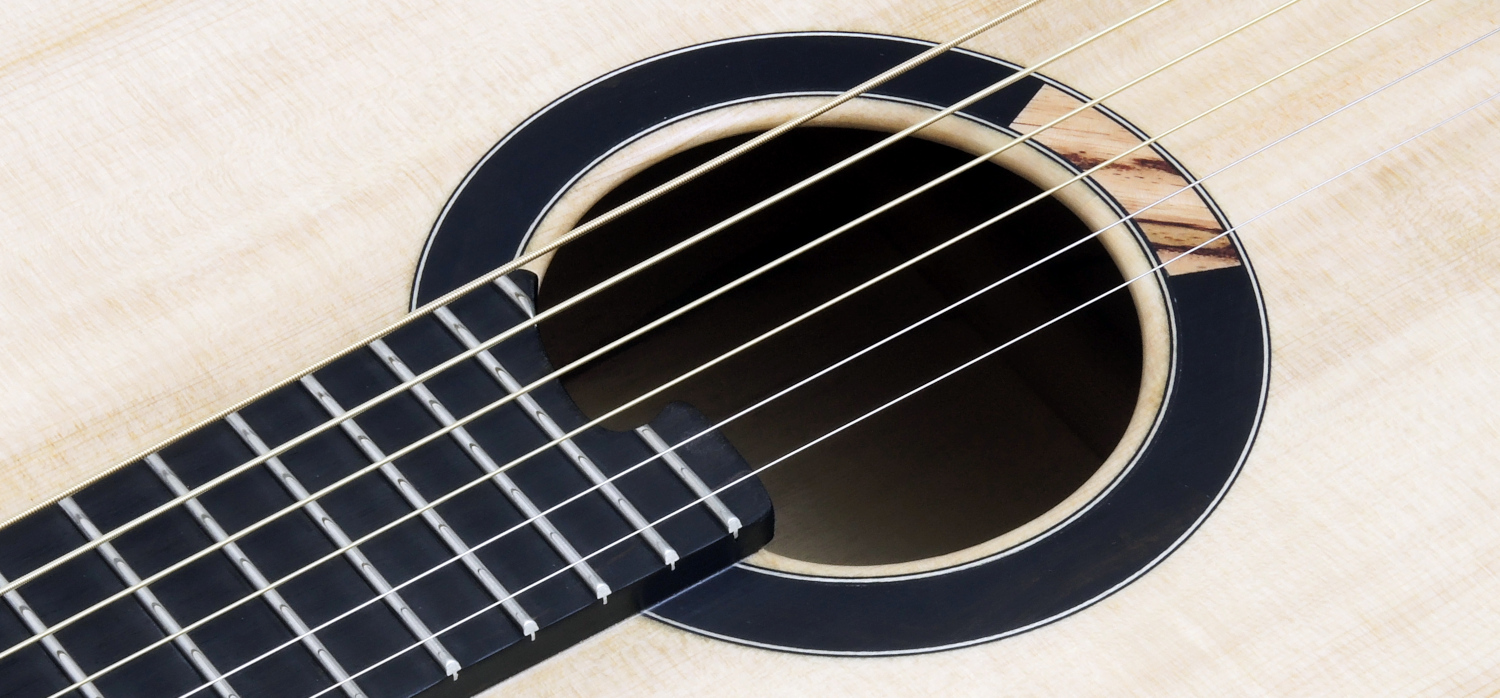Alert: In yet one more attempt to explain the relationship between the soundhole and the output of an acoustic guitar this turned into a rather long post.
As any and every aspect of a given acoustic guitar's construction contributes to the end result that we call the "sound" of the guitar, we know that soundhole dimensions must matter. But gaining insight into how and/or why those dimensions matter is an interesting study.
As a boy, I thought sound emanated out of the soundhole in the way sound comes from a speaker cone. I learned that this is not exactly the case. The body of a guitar works like a bellows though, unlike watching a large woofer reproduce your favorite bass lines, the movement is not directly viewable. (If you want to witness the movement indirectly, sprinkle some dry tea leaves on the soundboard of an acoustic guitar lying on its back, strum the strings and watch the leaves dance). The front plate (soundboard, top, etc) is excited into a "pumping" motion by the plucking of the strings. The soundhole governs the volume of air that is moved in and out of the bellows. Using the speaker cone as an example, think of the front plate of the guitar as the paper of the speaker cone. That is where the sound is actually coming from. The soundhole is acting more like the port of the loudspeaker cabinet, as Nuuska alluded to.
A guitar having no soundhole will still generate some sound, though it will be impressively muted. If you were so inclined to build such a guitar (having no soundhole) you can easily verify that there is pressure inside the box that is restricting the movement of the front (and back, in the case of "responsive" back) plate(s). Opening a soundhole in this "test" guitar has an immediate effect on the sound, relative to the size of the hole. To the ear, a series of small holes accomplishes the same goal a one large hole. That goal is to free the plate(s) of restriction due to air pressure.
A guitar with "too small" a soundhole would 1.) Be difficult to quantify without enlarging the existing hole or creating another followed by conducting an A/B test, and 2.) If it could be proven, the guitar would be delivering a less-than-optimal output. In such a case, there would be justification for believing that increasing the diameter of a soundhole makes a guitar louder.
Why not continue to enlarge the hole(s), thinking if a little is good, a lot must be better. If your sound is being captured by a microphone, such as for a performance or recording, there is a point of diminishing return where, without sensitive equipment, you simply can no longer hear the difference. And you run the risk of negatively altering the sound of the guitar as you encroach upon the prime real estate of the "speaker cone." By contrast, if you are using an Under Saddle Transducer, then drill or cut away. Willie Nelson aptly demonstrated that the dimensions of the hole(s) in the front plate of the guitar have little, if any, bearing on the output of a piezo UST.
The dimensions measured by the OP are all in keeping with expected norms established through decades of acoustic guitar construction. Most people are happy with the status quo. Then there are others who cannot leave well enough alone <grin>. In 1979 I took a guitar having one of those well-accepted 4 inch (or so) soundholes and cut a so-called "soundport" into the side of the upper bout closest to my face. Quite by accident (I was intending on installing a makeshift preamplifier) I discovered the guitar immediately sounded better. To me. And I had a revelation: The sound of the guitar (an acoustic guitar), generated by the bellows "pumping" action of the front plate, was more available to those hearers situated in front of the guitar. I, the player and producer of such delicate and harmonious psaltery, was being denied the pleasure of participation. That soundport I had cut, an additional hole in my guitar, had no effect on the sound in front of the instrument. The guitar sounded exactly the same. But it allowed access to the sound from where I was positioned.
For the finicky: a player of an acoustic guitar with a soundport is still not hearing "precisely" what the audience is hearing. But, instead of hearing the sound "around the corner" or "over the edge" of the instrument, a player (who is situated behind and off to one side of the soundboard) is able to hear the sound that is coming off the front plate "through" that soundport.

